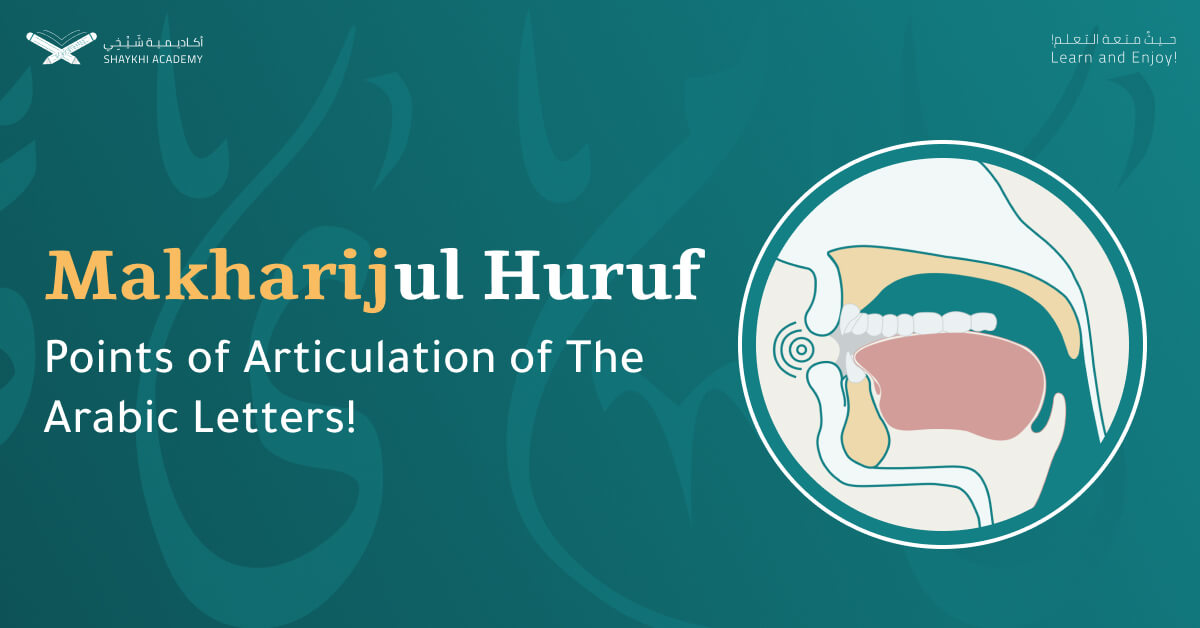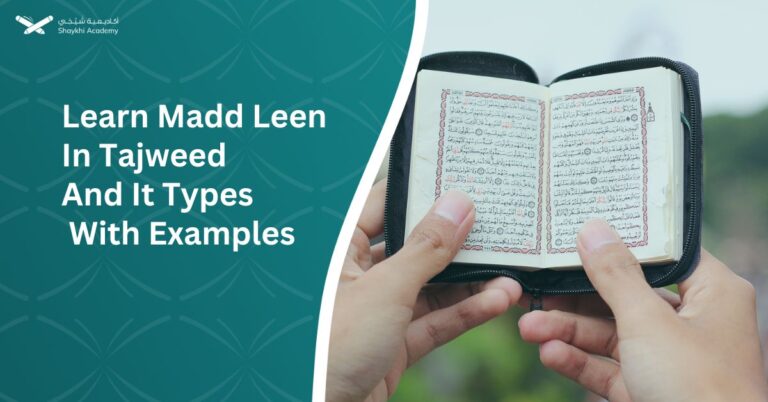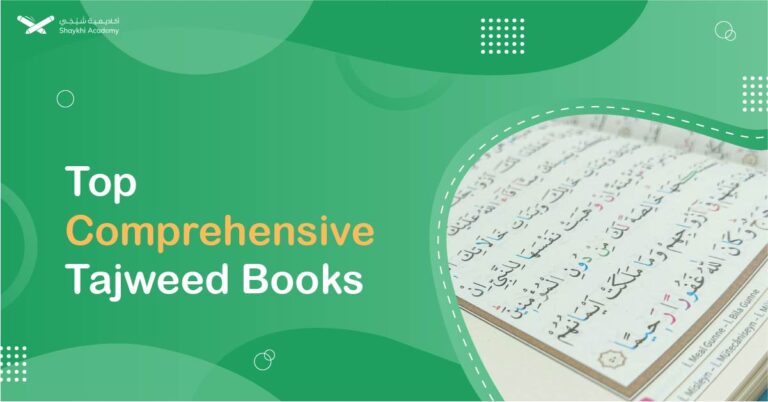Makharijul Huruf, or points of articulation in Arabic pronunciation, are debated among scholars, with some suggesting 14, 16, or 17 points. These include areas like the throat, tongue, lips, and nasal cavity. Understanding these points is crucial for proper Quranic recitation and Tajweed rules. Resources like Tajweed courses offer guidance for mastering these nuances, essential for accurate Quranic recitation.
The letters’ points of articulation (Makharijul huruf) are broken down into major general points of articulation and particular ones that are special for each letter in particular, and in this article, we’ll go over all of those. But first, make sure to read our “Arabic Letters Alphabet” article to keep up with the information in today’s article.
What Are The Arabic Points of Articulation (Makharijul Huruf)?
The Arabic points of articulation or Makharijul Huruf are the positions from which the letter exits, in other words, the place where the sound comes from, the exit point linguistically, and basically, the point of articulation of the letter while pronouncing it and differentiating it from other letters.
The number of letter points of articulation was a topic of debate among scholars. According to some, there are 14 points of articulation, including Qatrib, Al-Jami, and Al-Far. While Al-Jazari and Al-Khalil Ibn Ahmad claimed to be 17 points. Others, such as Sibawayh and al-Shatibi, claimed that there were 16, and the majority of scholars have agreed with them.
We can pronounce the letter as a consonant to determine the letter’s point of articulation, or we can just pronounce it strengthened after a Hamza (ء) with Fatha, Kasra, or Dammah and determine the letter’s point of articulation by noticing the place where the sound cutoff occurs. And this method is the simplest way to determine the letters’ points of articulation without having to study them in depth.
Read an indepth discussion on How Long Does It Take To Learn Arabic?
The Difference Between A General And A Particular Point of Articulation
We shall be presented with a classification of the general and particular/private points of articulation for the letters when learning the Alphabet, and it is from this classification that it can perfectly identify the point of articulation of each letter.
According to the majority of scholars, there are five general or major points of articulation:-
- Al Jawf (the empty space in the throat and mouth)
- The Throat
- The tongue
- The lips
- The nasal cavity
We will first go over a table of the general and particular letter points of articulation for each scholar because phonology scholars disagreed on the number of general and particular letter points of articulation
How to Know The Point of Articulation (Makhraj) of Any Arabic Letter?
Put the letter you want to know its point of articluation or Makhraj in the state of Al-Sukon, then put the letter Hamza (هَــمْـزَة) before it, and lastly, pronounce it! If you want, for example, to know the point of articulation of the letter Fā’ (فَـاء), you’ll apply the rule to pronounce (أَفْ).
Most scholars have compiled all of the letters’ points of articulation into seventeen different points, which are constrained to five general points, and they are as follows:
Scholars’ Thoughts about The Number of Letter Points of Articulation (Makharijul huruf)
The number of general and particular letters points of articulation held varying perspectives according to Tajweed (intonation) scholars. These scholars’ opinions can be limited to three, which are as follows:
14 Points of Articulation
The Throat
- The deepest part ( ه / أ )
- The middle part ( ع / ح )
- The closest part ( غ / خ )
The Tongue
- The Deepest part ( ق / ك )
- The Middle part ( ج/ ش / ي )
- The Edges ( ل / ض )
- The Tip (ن / ر / ث / د / ت / س / ز / ص / ث / ذ / ظ )
The Lips
- The bottom edge of the front two upper incisors (ف)
- Both lips (و/ م / ب )
The Nasal Cavity
It has only one exit (ghunna letters) which are (ن / م)
16 Points of Articulation
The Throat
- The deepest part ( ه / ء )
- Middle part ( ع / ح )
- The closest part ( غ / خ )
The Tongue
- The deepest part (ق)
- The deepest part and what lies opposite (ك)
- The middle part (ج/ ش/ ي)
- Tip of the tongue (ض)
- The lower of the tip (ل)
- The top side of the tip of the tongue and the gums of the front two upper incisions (ت / د/ ط)
- The tip of the tongue and the gums of the front upper incisors (ن)
- The tip of the tongue and hard palate close to the gums of the front 2 upper incisions (ر)
- The tip of the tongue and the edge of the front 2 lower incisors (س/ص/ ز)
- The tip of the tongue and the bottom edge of the front 2 upper incisors (ظ/ ذ/ ث)
The Lips
- The bottom edge of the front two upper incisors (ف)
- Both lips (و/م/ب)
The Nasal Cavity
17 Points of Articulation
Al Jawf (The empty space in the mouth and throat)
The empty space in the mouth and throat is a major area and an articulation point at the same time. The three Madd (lengthened) letters originate from this general area, and these letters are:
• Waw (و) Sakinah preceded by a Dhammah
• Yaa (ي) Sakinah preceded by a Kasrah
• Alif (أ) preceded by a Fathah
The Throat
- The throat’s farthest point and its distance from the chest( ء/ ه)
- The middle of the throat (ع/ح)
- The lowest part of the throat (غ/خ)
The Tongue
- The deepest part (ق)
- The deepest part and what lies opposite (ك)
- The middle part (ج/ش/ي) -Not the Madd ي-
- The tip of the tongue (ض/ل)
- The lower of the tip (ل)
- The top side of the tip of the tongue and the gums of the front two upper incisions (ت/د/ط/ر)
- The tip of the tongue and the gums of the front upper incisors (ن)
- The tip of the tongue and the edge of the front 2 lower incisors (س/ز/ص)
- The tip of the tongue and the bottom edge of the front 2 upper incisors (ظ /ذ /ث)
The Lips
- The bottom edge of the front two upper incisors (ف)
- Both lips (و/م/ب)
The Nasal Cavity
And finally, if you want to learn Makharijul huruf more in-depth and master them, you can join one of our Tajweed rules classes! Or you can watch our free Tajweed courses on YouTube!
Resources:
جدول مخارج الحروف العامة والخاصة
FAQ
(Q&A of Makharijul huruf)
What are the Arabic letters called?

They’re called abjad.
How to learn Makharij al-Huruf?
To learn Makharij al-Huruf, you need to leverage resources like structured courses and visual aids, beginners can effectively learn and master Makharij al-Huruf, paving the way for beautiful and accurate Quranic recitation.
Enroll in Structured Courses:
Join reputable Tajweed courses like those offered by Shaykhi Academy, providing comprehensive instruction on Makharij al-Huruf. These courses offer step-by-step guidance, ensuring a solid foundation in Arabic pronunciation.
Utilize Visual Resources:
Supplement learning with visual aids such as YouTube tutorials and diagrams illustrating articulation points. Visualizing the mouth and tongue positions aids in understanding and mastering pronunciation.
Practice Regularly:
Dedicate consistent time to practice pronunciation and recitation. Regular practice improves muscle memory and strengthens articulation, leading to better mastery of Makharij al-Huruf.
Seek Feedback:
Receive feedback from knowledgeable instructors or peers to identify areas for improvement. Corrections and guidance help refine pronunciation and ensure adherence to Tajweed rules.
Start with Simple Exercises:
Begin with basic exercises focusing on individual letters before progressing to more complex combinations. Mastering individual sounds lays a strong foundation for fluent recitation.
Record and Listen:
Record your recitation and listen attentively to identify areas needing improvement. Self-assessment enhances awareness of pronunciation accuracy and aids in self-correction.
Patience and Persistence:
Learning Makharij al-Huruf requires patience and persistence. Be consistent in your efforts and embrace challenges as opportunities for growth.
Unlock the Path to Quranic Mastery with Shaykhi Academy!
Are you seeking the finest Quranic education right from the comfort of your home? Look no further! Shaykhi Academy stands out as a premier online Quran learning platform, dedicated to providing exemplary education to both children and adults.
Why Choose Shaykhi Academy?
- Connect with highly qualified native tutors.
- Flexible scheduling to suit your busy lifestyle.
- Affordable classes tailored for all levels.
- Accessible from anywhere around the globe.
Discover Our Range of Courses:
- Arabic Noorani Qaida: Lay a solid foundation for Quranic studies.
- Online Quran Classes for Kids: Engaging lessons for lifelong learning.
- Tajweed Rules for Kids: Learn to recite with confidence.
- Quran Hifz for Kids: Step-by-step guidance to memorize the Quran.
- Quran for Adults: Introduce yourself to Quran reading and Tajweed rules.
- Online Arabic Courses: Master the language of the Quran.
- Islamic Studies: A wide range of topics related to Islam, including theology, law, Quranic studies, Hadith.
Don’t Miss Out on Your Chance to Excel!
Whether you’re a beginner or seeking advanced knowledge, Shaykhi Academy can guide you! Book your free trial now and make Ramadan 2024 your Quranic turning point!
Conclusion:
The concept of Makharijul Huruf, or points of articulation, refers to the positions within the mouth from which Arabic letters are pronounced. Scholars have debated the precise number of these points, with some suggesting 14, 16, or even 17 distinct articulation points.
These points encompass areas such as the throat, tongue, lips, and nasal cavity. Understanding these articulation points is crucial for proper pronunciation and Tajweed (intonation) rules. Methods for determining the point of articulation include pronouncing the letter with a Hamza (ء) and observing where the sound cutoff occurs.
While the majority of scholars agree on the general categories of articulation points, variations exist in their classification and interpretation, highlighting the complexity of Arabic phonology. Learning and mastering these points are essential for accurate Quranic recitation, and resources such as Tajweed courses offer comprehensive guidance for those seeking proficiency in this aspect of Arabic language and Quranic studies.




















